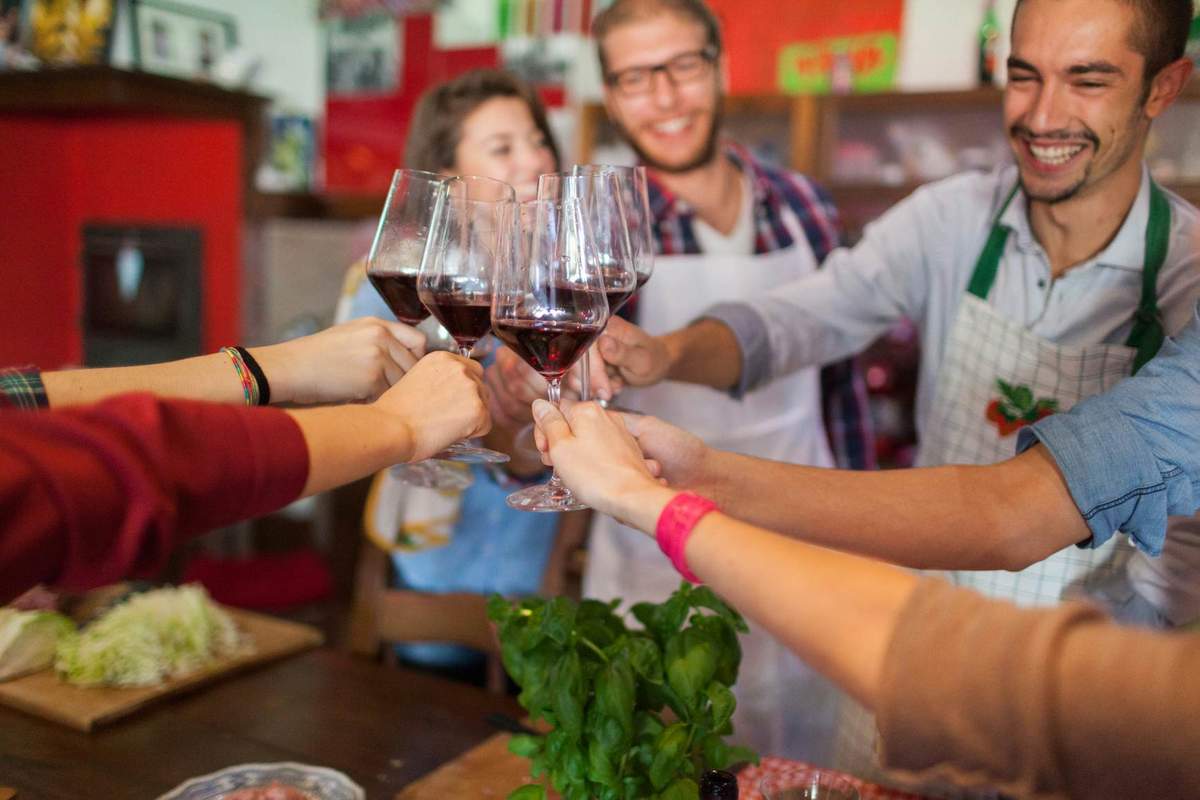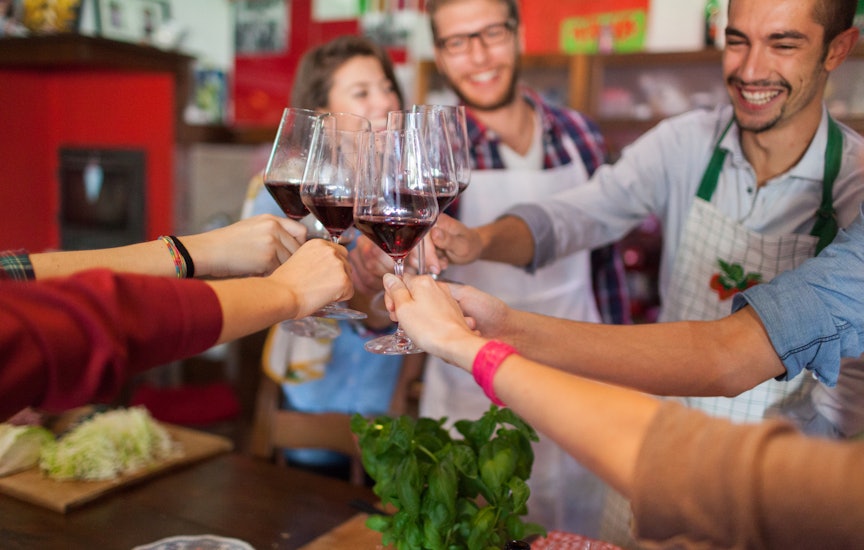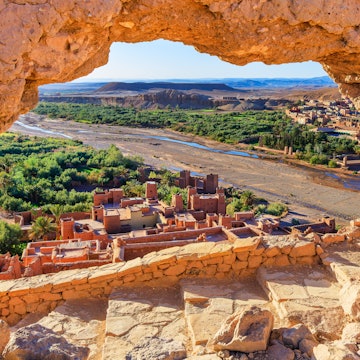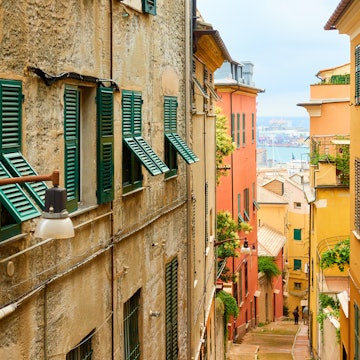

Botanical Garden in Cagliari, Sardinia, Italy. Torruzzlo/Shutterstock
Sitting pretty between Spain, Tunisia, the French Riviera and the Italian mainland, Sardinia lies at the heart of the Mediterranean.
With its splendid white sands and translucent turquoise waters, the island is justifiably famed as a beach holiday destination – but all year long, it’s well worth heading inland to discover the island's walking trails, urban attractions and unique cultural heritage.
Start planning your trip with our roundup of the eight top places to visit in Sardinia.

1. Golfo di Orosei
Best for dramatic coastlines and scenic boat trips
With limestone escarpments plunging headlong into the sparkling Mediterranean, the Golfo di Orosei is one of the most dramatic coastal destinations in all of Europe. The meeting of land and sea here is so abrupt that the gulf’s best beaches, such as Cala Mariolu, are accessible only by boat or on foot. The most straightforward way to explore this stretch of coast is on a boat tour from the holiday resort of Cala Gonone, which will take you dipping in and out of caves and coves all day, with ample opportunities to sunbathe and swim.
Hikers with the stamina to explore further will be richly rewarded by one of Sardinia’s finest coastal trail networks, extending south of Orosei from Cala Luna to Cala Sisine. For climbing enthusiasts, the ultimate prize is Selvaggio Blu, a multiday route that takes you up cliff faces into idyllic seaside landscapes that few tourists ever see.
Planning tip: For a demanding but unforgettable all-day hike, catch an early boat to Cala Sisine, then hike the 12km one-way route back up the coast to Cala Gonone, pausing midway for the obligatory photo op at Arco di Lupiru, a massive natural stone arch.

2. Su Nuraxi di Barumini
Best for history
Sardinia’s abundance of prehistoric archaeological sites known as nuraghi offers a captivating glimpse of the island’s mysterious prehistory. If you only have time to visit one, set your sights on Su Nuraxi di Barumini (also know as Nuraghe Su Nuraxi), about 1 hour north of Cagliari. The four conical towers that once dominated the landscape have been worn down by time, but it’s easy to conjure up visions of the Bronze Age village that once stood here as you clamber down stone steps and navigate narrow passageways. The site’s centerpiece is an imposing 18m-high tower fragment surrounded by a circular courtyard with walls up to 7m thick.
Planning tip: To discover Sardinia’s thousands of other nuraghi, explore the map at Nurnet.
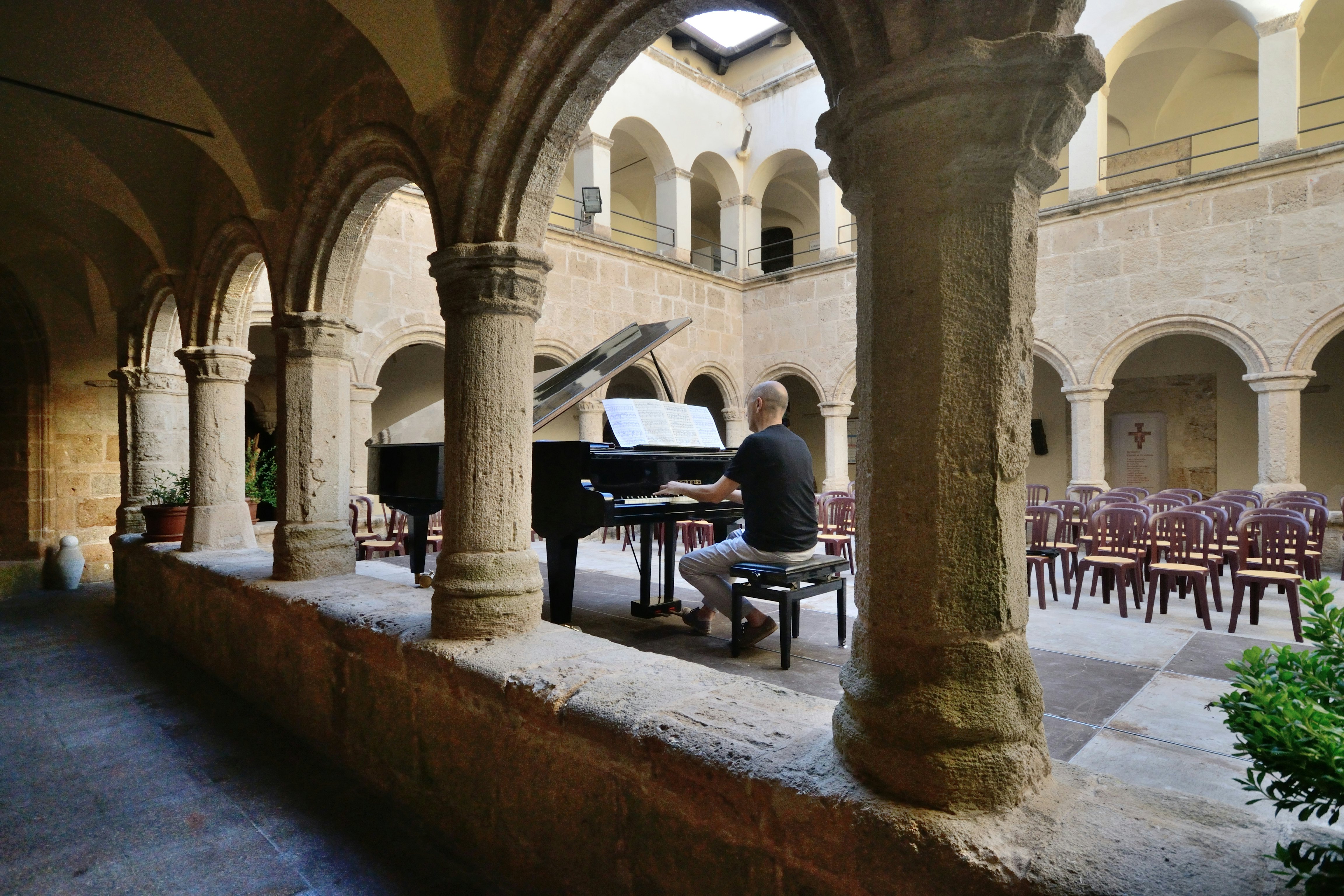
3. Alghero
Best for couples

Meet your new travel partner
Unlimited data while you travel with Holafly eSIM. Use code LONELYPLANET for an exclusive discount.
Gazing west across the Mediterranean toward Spain, charming Alghero feels equal parts Iberian and Sardinian. The city’s official language is Catalan, while its golden-hued 16th-century ramparts hearken back to the days of Aragonese rule. Climb the Campanile next to the cathedral for panoramic views of the cobbled streets and Gothic palazzi of the historic center, backed by the shimmering waters of the Riviera del Corallo.
To fully appreciate Alghero’s easygoing vibe, take an early evening stroll along its sea walls, framed by a trio of picturesque towers and lined with open-air restaurant terraces. At sunset, it’s the perfect spot to watch the world go by over a bottle of vermentino and a plate of aragosta alla catalana (lobster with olive oil, tomatoes, onions and lemon juice).
Planning tip: Alghero is charmingly perched on the west coast, but not that well served by public transport outside of summer. To reach secluded beaches and nature reserves, a car is best.

4. Arcipelago della Maddalena
Best for island-hopping
Sprinkled across the placid seas of northeastern Sardinia, this stunning archipelago has been preserved since 1994 as a national park. From the tiny coastal resort of Palau, small boat operators offer island-hopping day trips to watch dolphins and explore remote beaches, while ferry boats make the 15-minute crossing to the archipelago’s two largest islands, Maddalena and Caprera.
For an easygoing Mediterranean vibe, wander the pedestrianized Via XX Settembre in La Maddalena’s historic center and pause for an aperitivo (aperitif) during the evening passeggiata (stroll). By day, head 7km east across the causeway to the Compendio Garibaldino, the sprawling former estate of Italy’s national hero Giuseppe Garibaldi. Afterward, stop in for a swim at Due Mari or Spiaggia del Relitto.
Planning tip: You can bring your car but it’s best not to. Maddalena and Caprera are the only islands on which you can drive. A public bus, run by Turmo Travel, circumnavigates Isola Maddalena stopping at beaches, and also runs to Isola Caprera. To get to other islands, you’ll need a boat.

5. Barbagia
Best for traditional Sardinian culture
The rugged hill country south of Nuoro was the last Sardinian outpost to be conquered by the Romans, earning it the name Barbagia (akin to “barbarian”). Ancient traditions still persist in the region’s festivals, most notably mid-January’s Festa di Sant’Antonio Abate, when bonfires illuminate the village streets of Mamoiada and masked men draped in sheepskins and cowbells parade through town.
If you miss the main event, Mamoiada’s Museo delle Maschere Mediterranee is the next best thing, with fabulous displays of masks, costumes and video footage. The nearby village of Orgosolo is another fascinating place to explore. Grab a multilingual audio guide at the tourist office and head for Corso Repubblica to explore Orgosolo’s vivid collection of 200 street murals, which depict a range of political and historical themes.
Planning tip: Fall is another wonderful time to visit Barbagia. During the Autunno in Barbagia festival (September to December), the region’s villages invite visitors to discover local cultural and culinary traditions.

6. Supramonte
Best for hiking
Hikers will adore the Supramonte, a rugged limestone massif punctuated by deep gorges and remote valleys, and crisscrossed by spectacular walking trails. Just south of Dorgali, the 8km round-trip hike to Gola Su Goroppu passes through an enchanting valley perfect for swimming or riverside picnicking, before abruptly narrowing into a spectacular gorge where you can boulder-hop upstream between sheer, polychrome cliffs.
Equally evocative is the nearby hike to the prehistoric village of Tiscali, whose stone walls and ruined edifices lie in the collapsed remains of a massive cave. Fans of remote beaches should switchback up to the Altopiano del Golgo north of Baunei to hike the Cala Goloritzé trail, which drops dramatically to a pristine cove presided over by a dagger-shaped rock.
Planning tip: To avoid the tour boats at Cala Goloritzé, hit the trail early in the morning, when the weather is cooler, and when you’ll have the beach largely to yourself.

7. Parco Nazionale dell’Asinara
Best for wildlife
Lying off Sardinia’s northwestern tip, Parco Nazionale dell’Asinara is an island oasis of untamed nature. Albino donkeys, wild boar and silky-haired mouflon sheep prowl through the macchia (Mediterranean scrub), while peregrine falcons soar overhead and loggerhead turtles ply the surrounding waters. Access is restricted to day trippers only. To make the most of the island’s untrammeled beaches and granite coves, catch an early ferry from Porto Torres or sail across on a catamaran from the summer resort of Stintino, where you can also lounge on the dreamy sands of Spiaggia della Pelosa.
Planning tip: From May to September, you can visit CEAS, the turtle rehabilitation center where volunteers tend to turtles who’ve been injured or caught in fishing nets.
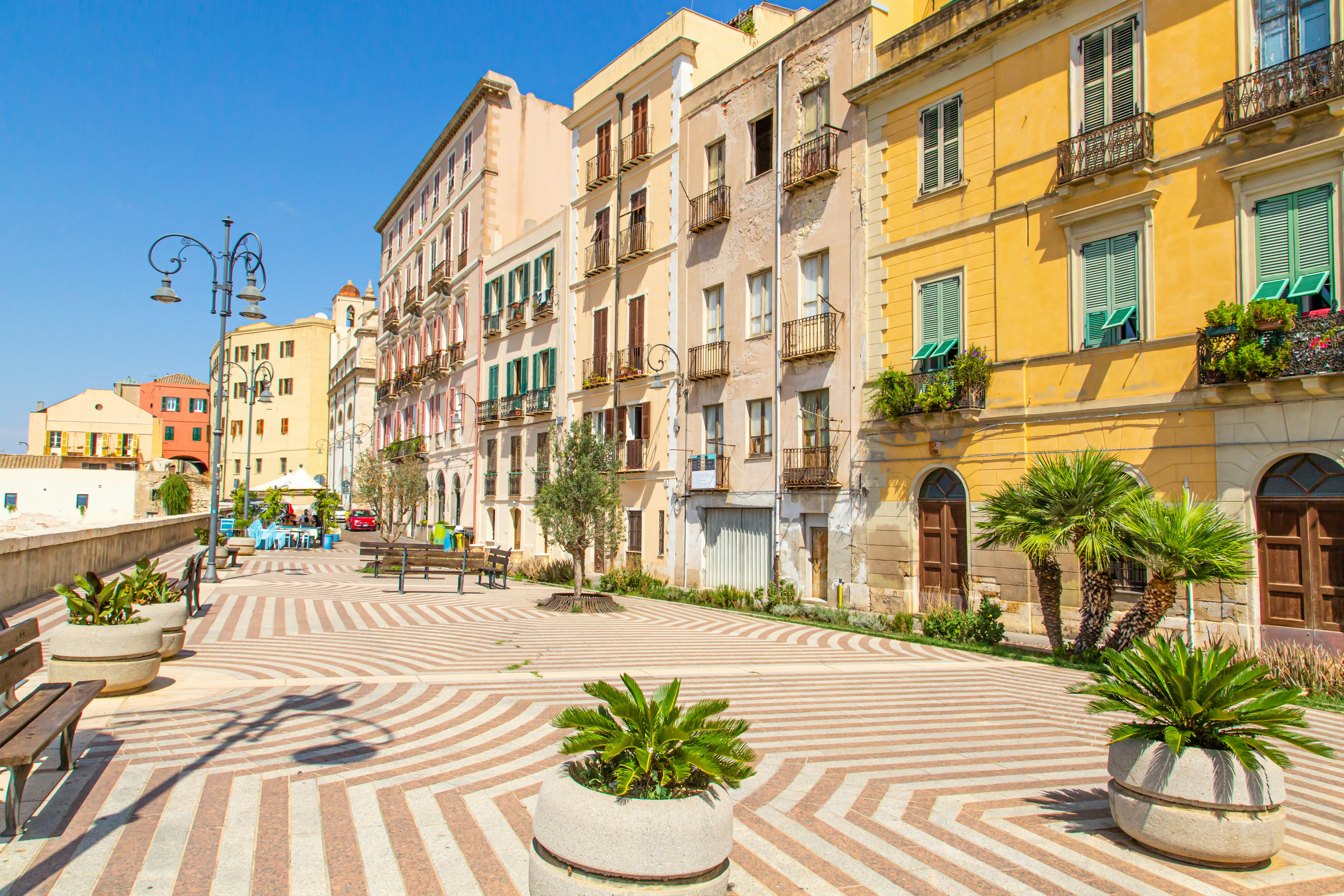
8. Cagliari
Best for urban excitement
Sardinia’s capital and largest city is an ideal place to begin or end any trip to the island. Stroll through the narrow lanes of Il Castello, Cagliari’s medieval hilltop citadel, to admire the dizzying mix of architectural styles at Cattedrale di Santa Maria and the far-reaching views from the top of Torre dell’Elefante. Get a feel for Sardinia’s millennia-long, multilayered history at the magnificent Museo Archeologico Nazionale, then ogle the artwork at the Galleria Comunale d’Arte.
For shopping, dining and nightlife, head for the bustling Marina district by Cagliari’s palm-fringed waterfront. When you’re ready for something more tranquil, escape to the fountains and gardens of the Orto Botanico or hop a bus out to the sweeping sands of Poetto Beach.
Planning tip: Cagliari is built on a steep hill and exploring can be hot work; buses, taxis and Vespa tours help ease the strain.





